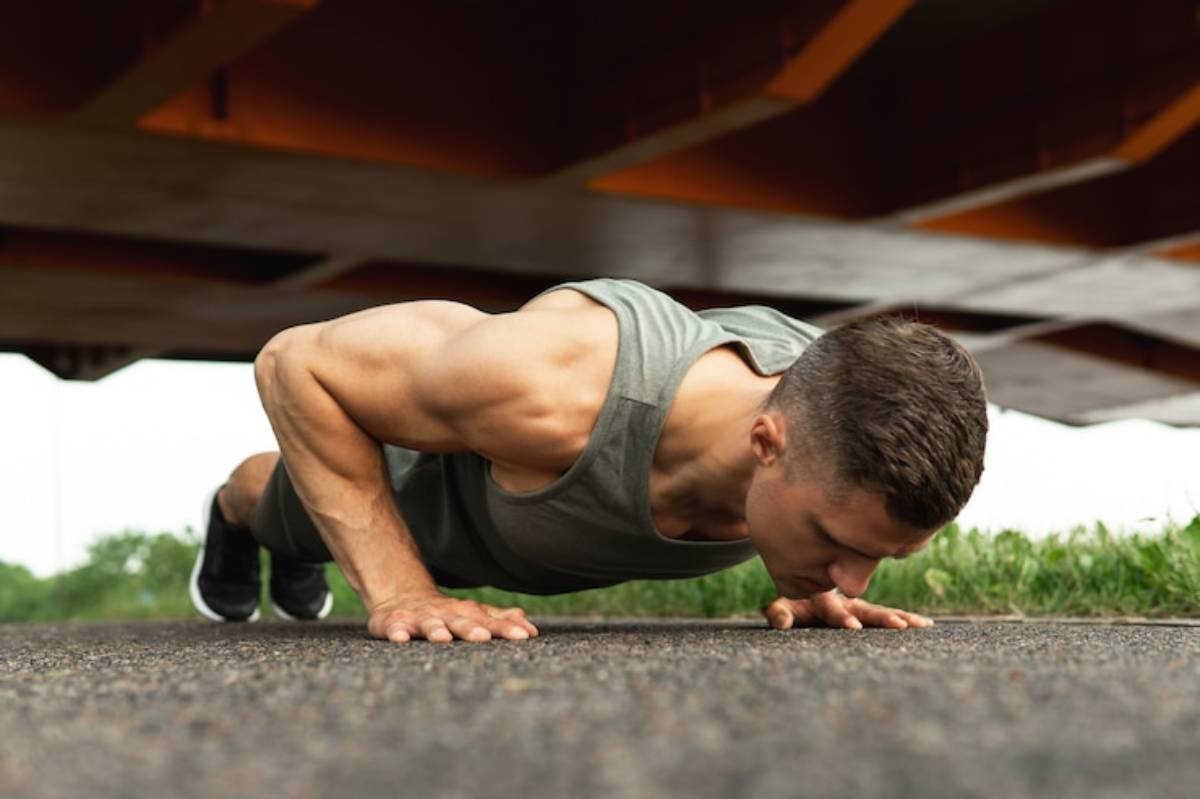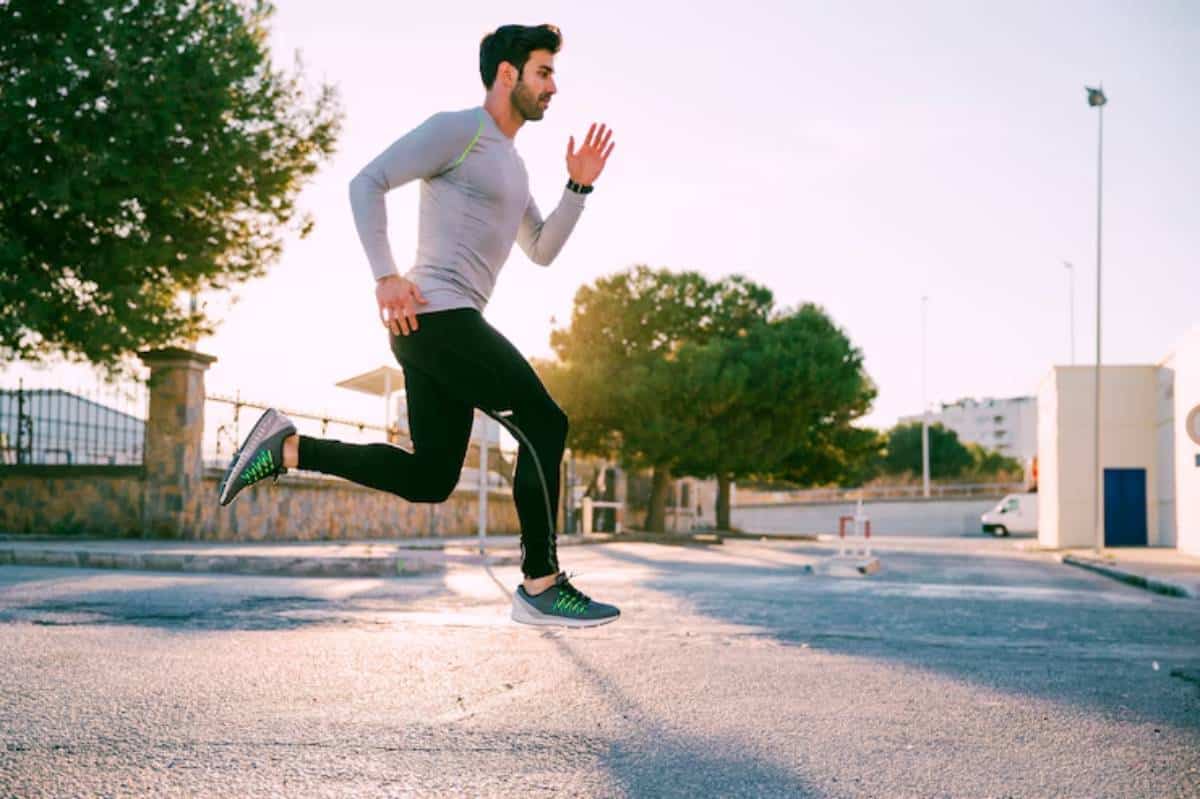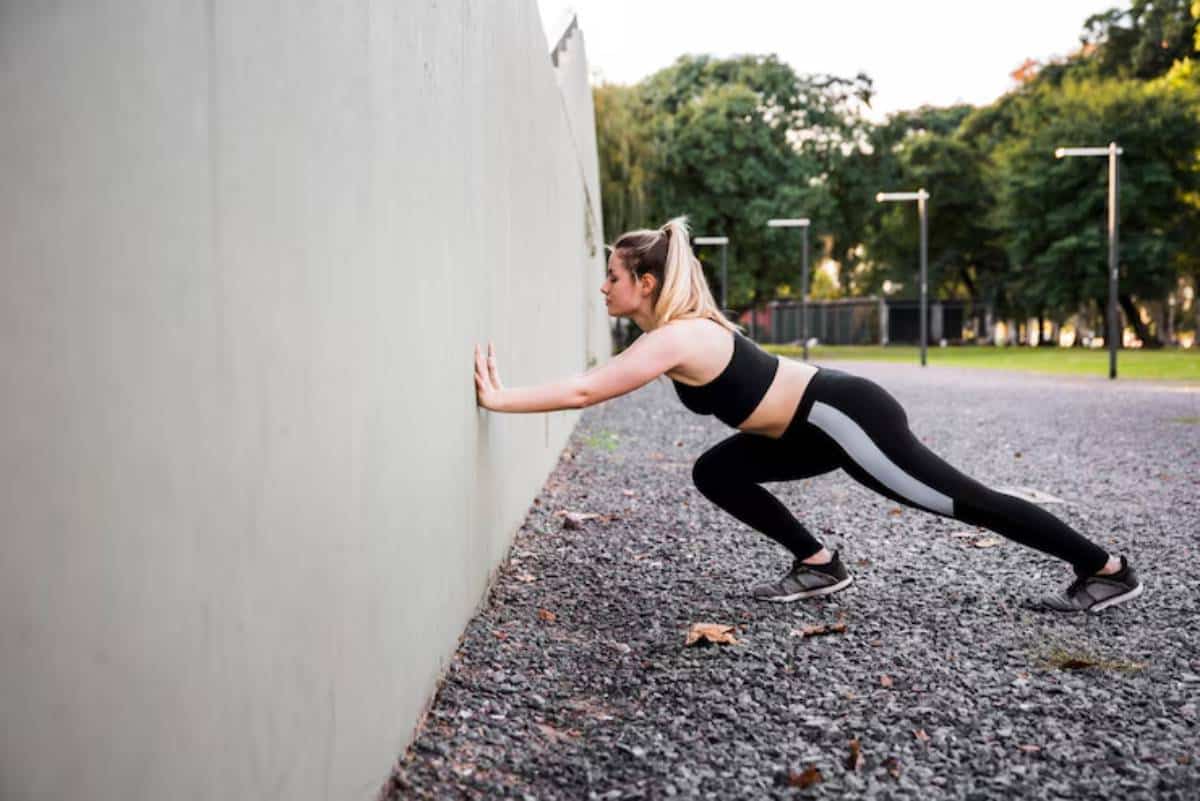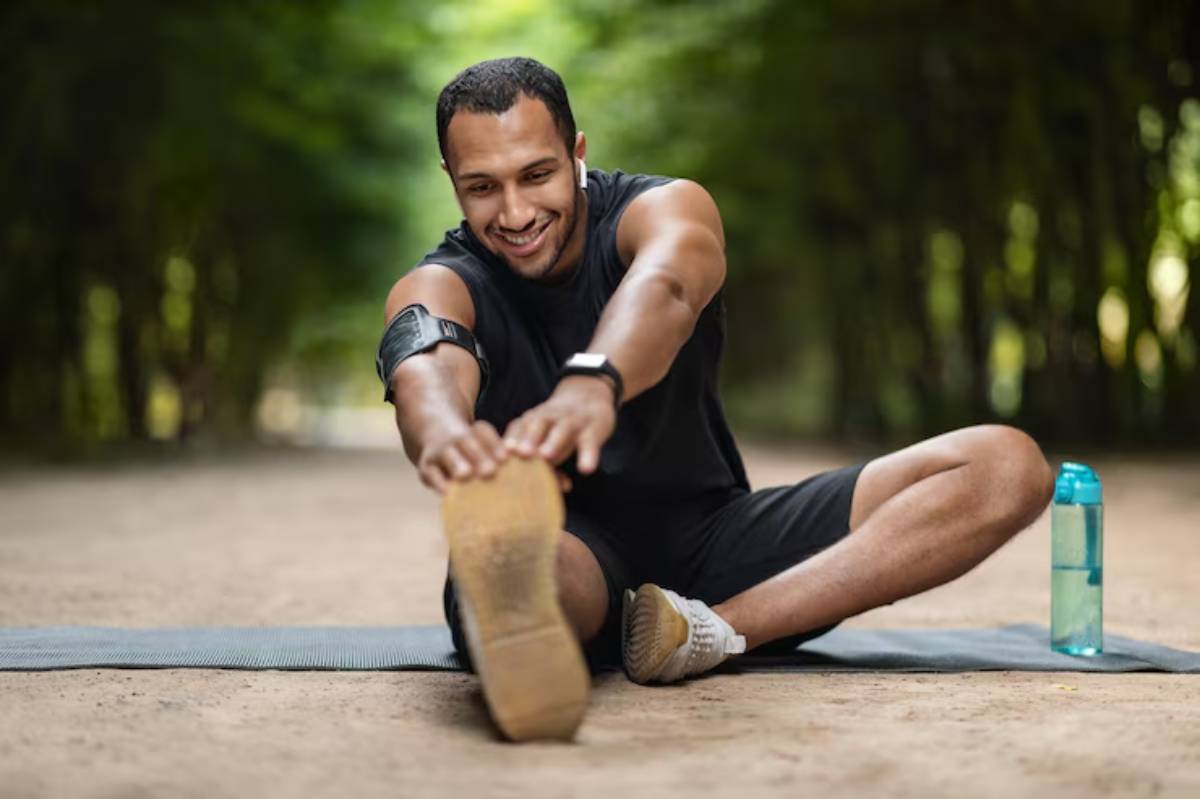
Bulletproof Your Joints With Controlled Bodyweight Exercises
Ever felt that nagging knee twinge or stiff shoulder after a workout? Or worse, had to skip training because your body simply couldn’t keep up? If so, you’re not alone. Many of us focus on lifting heavier, running faster, or pushing harder — but what about bulletproofing your joints?
Your joints are the unsung heroes of your body. They let you move freely, absorb impact, and handle the load life throws at you. But without the right care, they’re also prone to wear and tear. This is where controlled bodyweight exercises come in. They’re not just about building muscle — they’re about joint health, injury prevention, and long-term resilience.
In this guide, you will go through effective joint health workouts that use bodyweight strength training to keep your joints happy, healthy, and strong. Whether you’re an athlete, a weekend warrior, or simply someone who wants to move better, these controlled strength exercises will help you stay injury-free and ready for action.
Why Joint Health Should Be Your Priority
It’s easy to overlook joint health until something goes wrong. We often chase bigger lifts, faster times, or more intense workouts, forgetting that our joints are the foundation.
The Problem: Joint Neglect
Joints (like knees, shoulders, hips, and ankles) endure repetitive stress. Without proper attention, they can become stiff, unstable, or inflamed. That’s where injury prevention bodyweight exercises shine. They strengthen not only the muscles but also the ligaments and tendons supporting the joints.
A study published in the Journal of Orthopaedic & Sports Physical Therapy (2018) found that controlled strength exercises improve joint stability, reducing injury risk (Ageberg & Roos, 2018). This means less downtime, fewer aches, and more freedom to move.
What Makes Controlled Bodyweight Exercises Effective?
Unlike explosive or high-rep routines, controlled bodyweight exercises focus on slow, deliberate movements. They increase time under tension, promoting deeper muscle engagement and strengthening the connective tissues around your joints.
Benefits of Controlled Strength Exercises
- Strengthens stabiliser muscles: Helps protect joints from injury.
- Improves mobility: Enhances flexibility and range of motion without compromising joint integrity.
- Builds proprioception: Increases body awareness and balance, key for injury prevention.
- Low impact: Kinder on the joints compared to high-intensity workouts.
Essential Joint Health Workouts: Full-Body Focus
Here’s a breakdown of injury prevention bodyweight exercises targeting key joints. These routines emphasise controlled strength exercises that promote both stability and mobility.
1. Controlled Push-Up to Downward Dog (Shoulders and Wrists)
- Why it works: Strengthens shoulders while improving mobility and reducing wrist strain.
How to do it:
- Start in a push-up position.
- Lower slowly for 3–4 seconds.
- Push back into downward dog, extending shoulders and stretching the upper back.
Reps: 8–12 (focus on slow, controlled tempo).
2. Slow Step-Back Lunges (Knees and Hips)
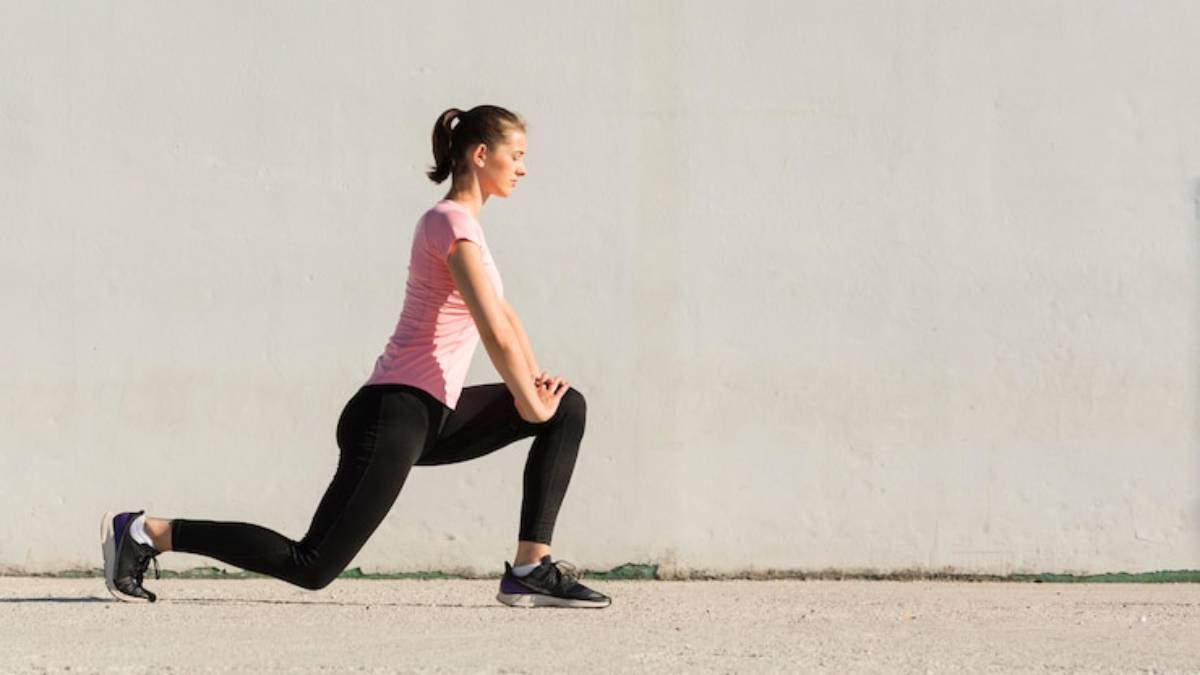
- Why it works: Strengthens glutes and quads while stabilising the knee joint.
How to do it:
- Step back into a lunge.
- Lower over 3–4 seconds, keeping your knee aligned.
- Pause briefly at the bottom, then return.
Reps: 10 per leg.
3. Glute Bridge March (Hips and Lower Back)
- Why it works: Engages glutes, stabilising hips and protecting the lower back.
How to do it:
- Lie on your back, knees bent.
- Lift your hips into a glute bridge.
- Slowly lift one knee towards your chest, alternating sides.
Reps: 8–10 per leg.
4. Wall Angels (Shoulder Mobility)
- Why it works: Opens up tight shoulders, improving overhead mobility.
How to do it:
- Stand against a wall, arms raised.
- Slowly slide your arms up and down, maintaining contact with the wall.
Reps: 10–12.
5. Side Plank with Hip Drops (Core and Hips)
- Why it works: Strengthens the obliques and hips, supporting spinal and pelvic stability.
How to do it:
- Start in a side plank.
- Slowly lower your hips to the floor, then lift back up.
Reps: 8–10 per side.
Sample Joint Health Workout Routine (Full-Body)
Here’s a controlled strength exercise routine for balanced joint health workouts.
Warm-Up (5 minutes)
- Arm circles (30 seconds).
- Leg swings (30 seconds per leg).
- Cat-cow stretches (10 reps).
- Hip circles (30 seconds).
Main Workout
| Exercise | Reps/Time | Rest |
| Push-Up to Downward Dog | 8–12 reps | 30 sec |
| Step-Back Lunges | 10 reps per leg | 30 sec |
| Glute Bridge March | 8–10 per leg | 30 sec |
| Wall Angels | 10–12 reps | 30 sec |
| Side Plank with Hip Drops | 8–10 per side | 30 sec |
Rounds: Complete 3 rounds.
Cool-Down (5 minutes)
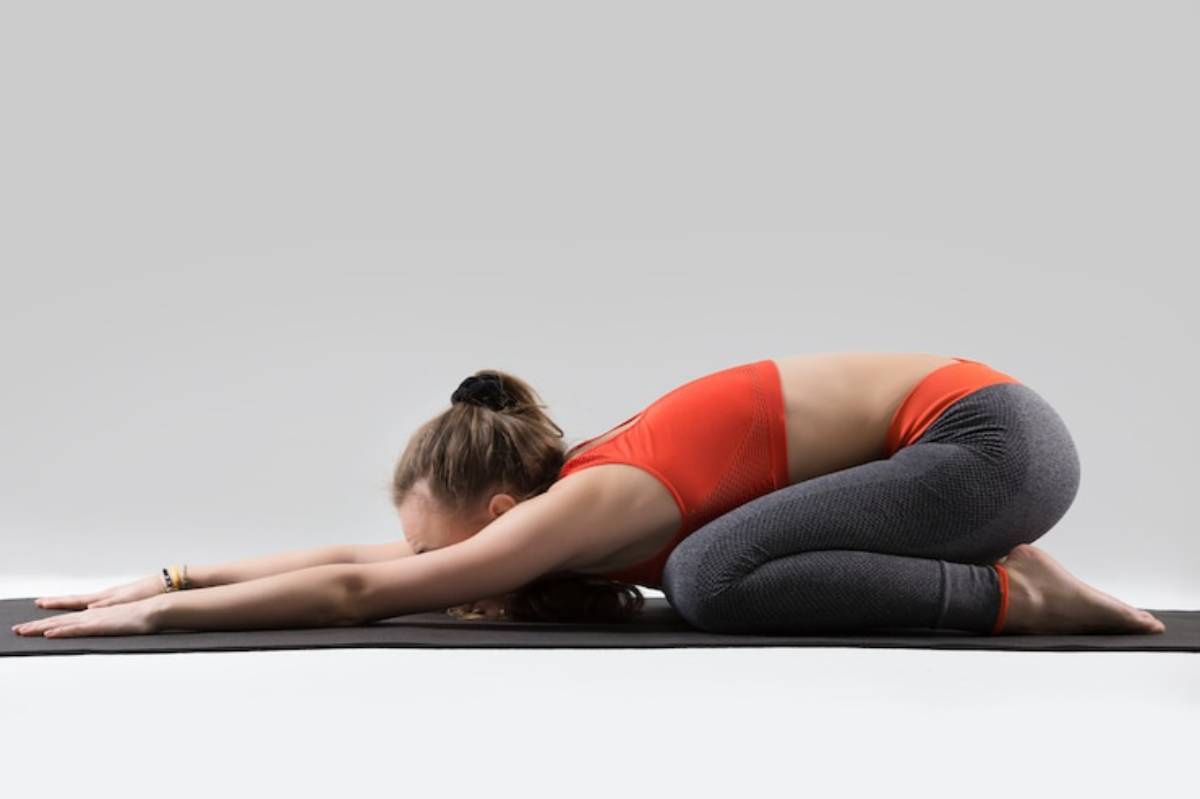
- Seated forward fold.
- Hip flexor stretch.
- Shoulder dislocates (use a towel or strap).
Tips for Maximising Joint Health
- Focus on form: Controlled movement means nothing without proper alignment.
- Control tempo: Try a 3-second descent and 2-second ascent to increase time under tension.
- Prioritise mobility: Include stretches for tight areas like hips, shoulders, and ankles.
- Stay consistent: Joint health is a long game — regular practice pays off.
- Listen to your body: If something feels off, adjust or pause. Pain isn’t progress.
Real-Life Success Story: Strength Without Injury
Meet Alex, a software developer and amateur cyclist. After years of neglecting joint health, he found himself sidelined by knee pain. Incorporating controlled bodyweight exercises into his routine, especially glute bridges and step-back lunges, helped him regain stability and return to cycling pain-free. His secret? Slow, mindful training — not just chasing numbers.
Common Mistakes to Avoid
- Skipping warm-ups: Mobilising joints before loading them is crucial.
- Going too fast: Speed sacrifices control and increases injury risk.
- Neglecting mobility: Strength without flexibility leads to stiffness and imbalance.
Conclusion: Build Resilience With Controlled Strength
Strong muscles are great. But resilient joints? That’s what keeps you moving well for life. Incorporating joint health workouts and controlled bodyweight drills and exercises ensures you not only build strength but also protect your body from the inside out.
It’s about longevity. About feeling good, moving well, and staying injury-free. And it starts with slowing down, tuning in, and giving your joints the attention they deserve.
Ready to bulletproof your joints? Try the routine above, and feel the difference for yourself. Share your experience or questions in the comments. And if this guide helped, pass it along to someone who could use a little joint TLC!
